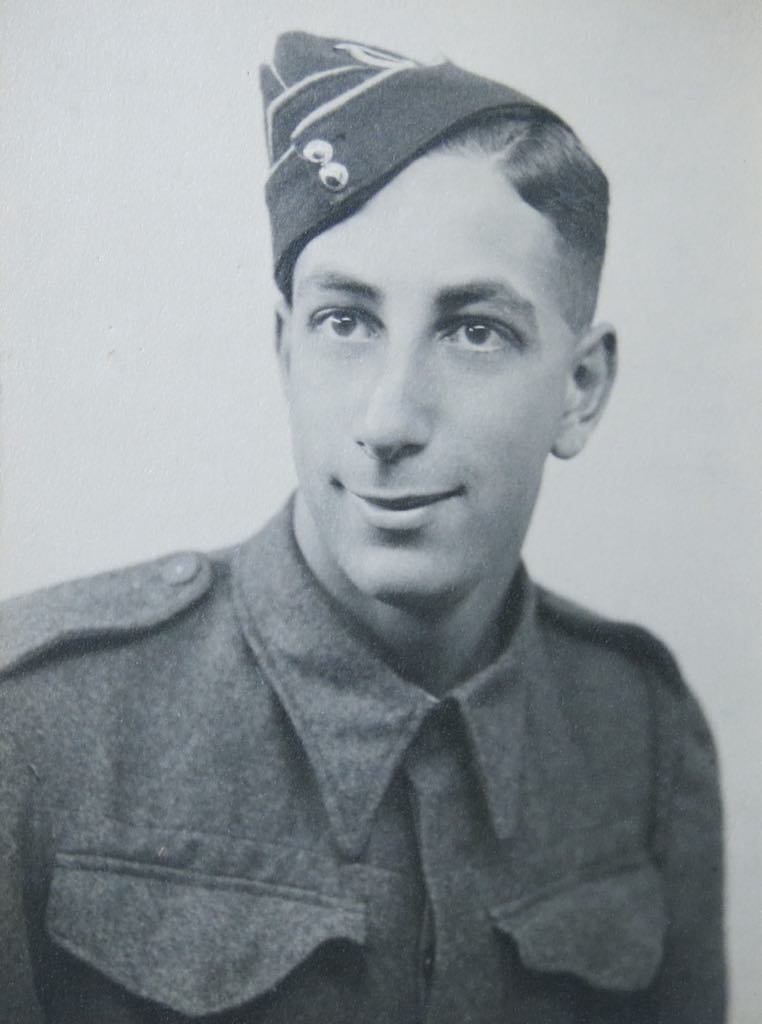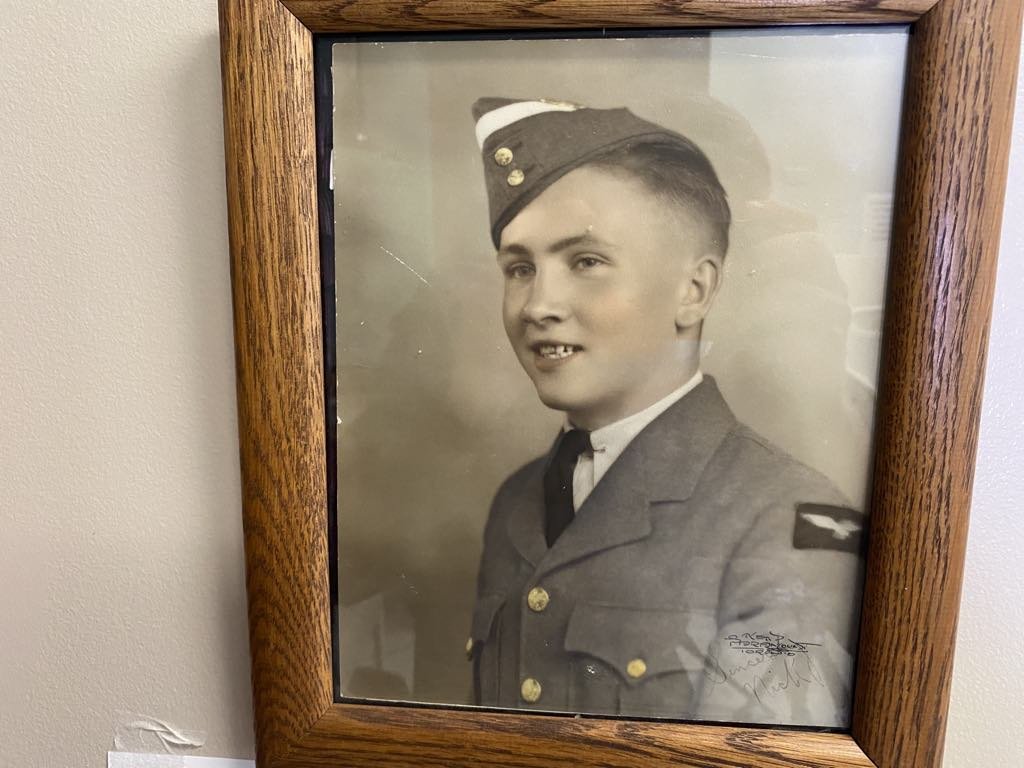
Since November 2021, Zach Dunn has made it his mission to save the stories of WW2, Korean War and Vietnam War Veterans. Saving their stories for the next generation!
World War 2 (WW2) Veterans
-

Anrold Graham WW2 Veteran
Anrold Graham WW2 Veteran, born December 12th 1925 in Lakefield Ontario Canada.
Arnold was born into a farm family and was the youngest of 12 children, with 6 brothers, who all served overseas, and 4 sisters. Mother Claire and Father Isaiah Graham.
Arnold Graham joined the Canadian Air Force at the age of 17 in 1942 and by his 18th birthday was flying in bomber missions over Germany in a Wellington Bomber plane as a Mid-Upper Gunner.
Arnold recalls his life in the service, his bombing missions and his life in Ontario after the war with Zach Dunn in a November 2021 interview.
-

Joice Foley WW2 Veteran
Joice Foley is a WW2 Veteran, born on April 1st 1924 in whithamsour england
Joice joined the British Navy in 1942 at the age of 18, as she says in her February 2022 interview with Zach Dunn.
"In England at that time, you either had to work in the factory or joined the forces, and the factory didn't apparel to me, so I joined the Navy"
Eventually completing her basic training, Joice was stationed in a mail office in England, where she was responsible for helping organize and deliver important war time message throughout Europe.
Later in her service she met her Husband Fred Foley 1919-2019 from Ottawa Ontario.
Joice Foley shares the story of her father who fought and served D-Day.
Delaying her wedding due to the D-Day/Normany Landings and much more.
Joice's energy and joy for life was truly on display in her interview with Zach Dunn in February 2022.
Joice Foley is currently 99 years old.
-

Ken May WW2 Veteran
Ken May, WW2 Veteran, was born on November 19th 1921 in East York Ontario Canada.
Ken joined the army at the age of 20 in 1941, shortly after completing his training in Ipperwash Ontario, he was sent overseas in a conveyor, where his crew encountered many German U Boats.
Ken traveled through Italy, fighting the Germans and Italians, as Ken mentions in a February 2022 interview with Zach Dunn
“One night we were on a mid night attack and walked right into an ambush, they took out most of our balloon, they didn’t even know what hit them.
Ken was shot 10 different times while on the front lines, his arm was badly wounded and doctors told him he would likely loose his arm.
He later explains that a new Doctor on the front wanted to save his arm, and the senior doctors let the newer Doctor try, which he succeeded.
After recovery Ken was sent back to Toronto to recover, 21 at the time, Ken continued his life in Toronto and peacefully passed away at the age of 101 in August 2023.
-

Jim Parks WW2 Veteran
Jim Parks, WW2 Veteran, was born on September 21st 1924 in Winnipeg Manitoba,
Jim joined the cadets at age 15 and when war broke out in September 1939, Jim was more than happy to enlist.
Jim completed numerous amounts of training which sent him initially over to England.
Jim Parks was part of the Winnipeg Rifles, which were a regiment preparing for a large land and water assault. Jim shared his experiences in a February 2022 interview with Zach Dunn.
At 19 years of age, Jim would take part in the infamous Normandy Beach Landings, at Juno beach June 6th 1944, better known as “D-Day”.
Jim tells Zach Dunn “I remember hearing the ping pong of bullets on the outside of the landing craft as we swept to shore”
Jim swept through France and ended the war in Germany.
As of Jan 28th 2024, Jim is 99 years Old.
-

Clifford Trewin WW2 Veteran
Veteran description coming soon
-

Fred Allison WW2 Veteran
Veteran description coming soon
-

Carl Flagel WW2 Veteran
Veteran description coming soon
Carl shares his experiences growing up in Saskatchewan, Canada, in the Great Depression (1930's), his time in the war as a Paratrooper, fighting the Germans on the Rhine River and his journey coming home to Ontario.
-
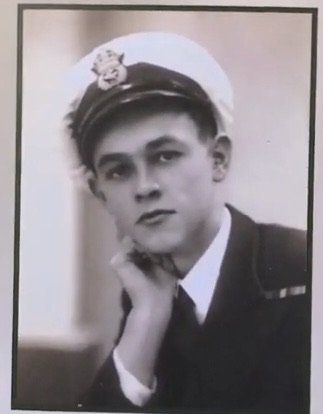
Les (Lester) Buxton WW2 Veteran
Veteran description coming soon
-

Melvin MacIntrye WW2 Veteran
Veteran description coming soon
-

Allister MacDonald WW2 Veteran
Veteran description coming soon
-

Albert Badger WW2 Veteran
Veteran description coming soon
-
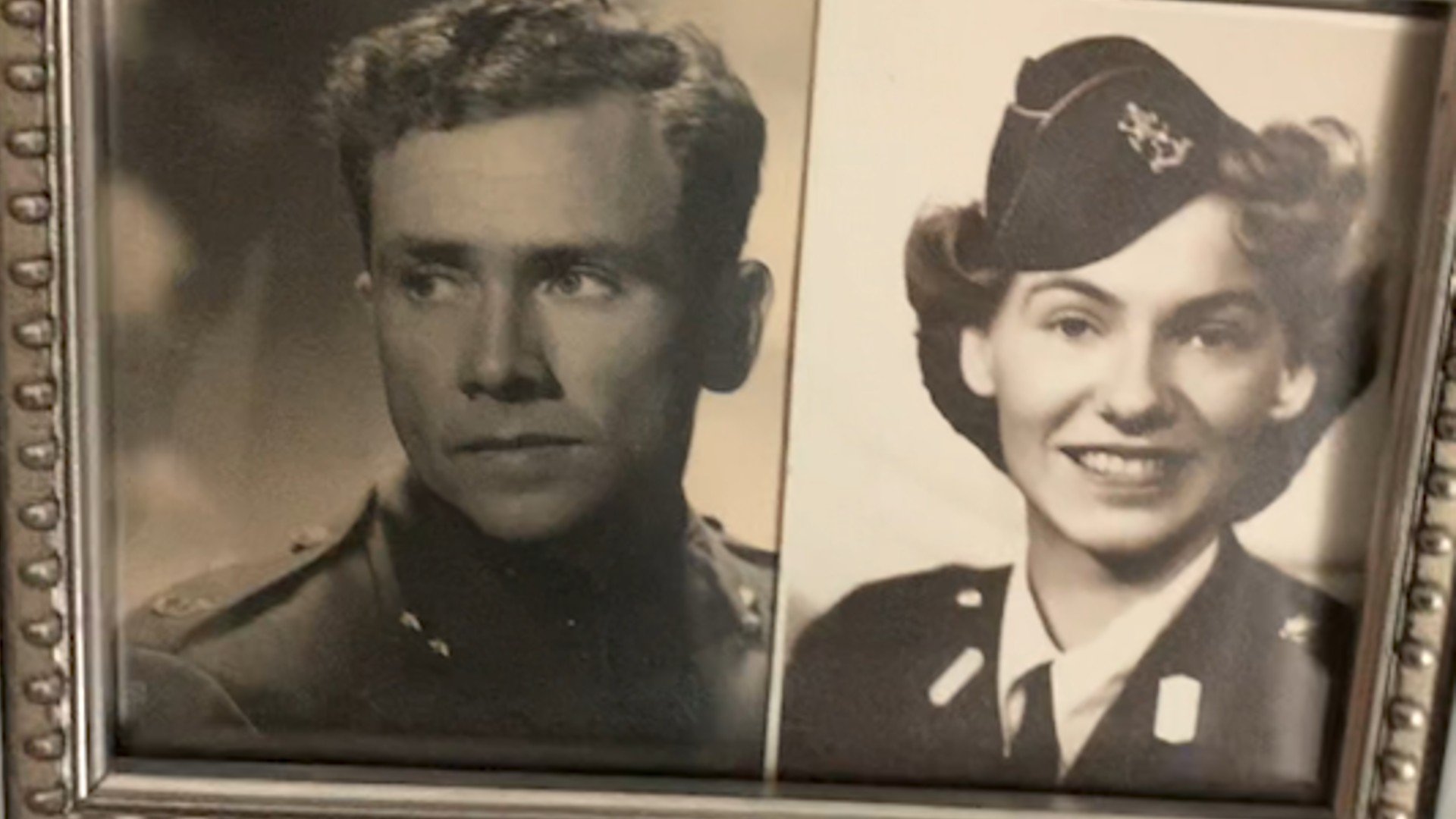
Sytske Drijber WW2 Veteran
Sytske Drijber, born January 29th, 1920, in Friesland, Holland. Sytske Drijber is a WW2 Veteran. Sytske Drijber immigrated to Canada at the age of 6. She grew up and became a school teacher. After hearing about the start of the war on the radio, Sytske was determined to do her part for the war effort. She volunteered for the Allied Force Royal Netherlands Army Intelligence in 1943, at the age of 23. She trained in the U.S. with the Women’s Auxiliary Army Corps (WAACs), then was sent to Australia. She trained for the Dutch Colonies, and as WW2 ended in May 1945, Sytske traveled to Java a few months later, right into the Independence War with the local population.
She had various jobs, including photo intelligence, reviewing maps, and analyzing photographs of Japanese and Allied planes. In her exclusive interview with Zach Dunn, she shares stories of her late husband, Oscar Drijber, and his time in Colditz Castle in Germany, better known as Oflag IV-C. Oscar escaped the camp in September of 1941, went to Switzerland, Spain, then England, and was later sent to the Island of Java, where he met Sytske.
After the war, Oscar and Sytske married in 1946 and immigrated back to Canada in 1949. They settled in Rockwell, Ontario, in 1954, where they both became school teachers. They lived together for 42 years until Oscar's death in 1996 at the age of 82. Zach Dunn interviewed Sytske Drijber in January 2023 as a part of Zach’s Veteran Documentary Project called GlobalVeteranStories.ca
-

Stanley Bowen WW2 Veteran
Veteran description coming soon
-

Alice Williams WW2 Veteran
Veteran description coming soon
-
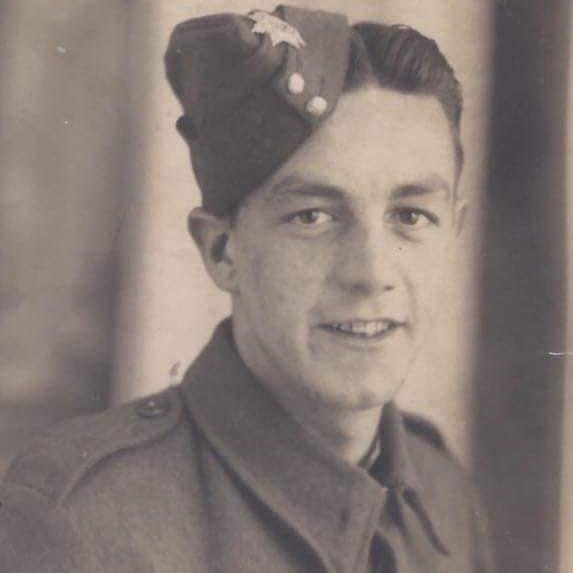
John Williams
Description goes here -
Dennis McNeil
Veteran description coming soon
-

Marjorie Drestler
Description goes here -

George Beardshaw
George Herbert Beardsaw, born September 14th 1923 in Yorkshire England. Growing up in one of the many Dr. Barnardo Boys Homes, a place for orphans or destitute children. One day one of the teachers came into his classroom and asked the room full of boys if they wanted to go to Canada, with his brother already in Canada, George happily raised his hand. In 1938 George was off on a ship to Canada at the age of 15. He was brought to a farm in Little Britain, Ontario, where he worked long hours for a little over 2 years. Life wasn’t easy for the young George, but he wanted to start fresh and decide his own future, at the age of 17, he quit the farm and joined the Canadian Army in the height of WWII in 1940.
George lived with his brother for a short while and signed up in Toronto, beginning his training at the Exhibition Grounds in Downtown Toronto, then he was sent to Bradford and Camp Borden. George was sent overseas in the middle of 1944, shortly after D-Day. He was trained as a replacement soldier and was quickly brought over the channel and right into the battle in France, Belgium and the Netherlands. George was attached to the Queen's Own Rifles and experienced intense combat over the next 8 months. During many battles, George remembers losing many friends, memories and emotions of those times are still hard for him to talk about over 80 years later. George and his unit captured many German prisoners, but George would ultimately become a prisoner of war himself. In a battle taking place in Deventer, Netherlands, he was overrun and captured by the Germans. He spent the last 28 days of the war moving to various POW compounds, living in different abandoned houses and churches, sleeping on the ground. George described the conditions as tough with no clean clothes or a shower for almost a month. George remembers the terrible food he was given as a POW. Each day they were only given 2 potatoes and sometimes cabbage stew (he describes the stew looking and smelling like crushed up dandelions). Sometimes, they would have bread, which George described tasting like sawdust. Geroge remembers marching one day with the other POWs, an American plane, who was strafing the area, the Germans, in fear, jumped into ditches to avoid the fire. Walking through smaller Dutch cities, he remembers seeing kids in the windows of houses gesturing the “V” sign for victory with their hands. At that time, George knew the war was soon over for him. George was eventually liberated by the Canadians when VE Day took place. George stayed in England for a while and visited his original family, before returning home to Canada and getting married and settling down in London Ontario Canada.
At the time of this video’s recording in June 2023 in London Ontario Canada, George is 99 Years Old and shares his remarkable story with Zach Dunn for the first time on camera. This video was part of Zach Dunn’s Veteran Documentary project called GlobalVeteranStories.com for more information, contact Zach Dunn via his website.
-

Rex Arnett
Rex Arnett was born November 12th, 1924 in Toronto Ontario Canada and is a WW2 Veteran. Rex’s father was a Veteran of WW1, born in 1900, Victor Arnett and joined at the age of 17, heading to France in 1917. Victor was injured after a German bomb fell close to their trench, as Rex says. Rex grew up playing baseball, hockey and many other sports in Toronto. Canada declared war in Germany on September 7th 1939, Rex was only 15 years old. At the age of 18 in 1942, Rex decided to serve his country and join the war effort and chose the RCAF. He was first sent to Calgary then sent to his OTU in the Bahamas where he met his crew.
Flying Officer (Pilot) John Willard Thompson Flight Sergeant (Pilot) John Henry Kendall Flight Sergeant (W.Op./Air Gnr.) Ronald Mark Wood Flight Sergeant (W.Op./Air) Desmond Bryant Flight Sergeant (Flt. Engr.) Ronald Wynn Sergeant Edwin Eric Whittaker (Flight Sergeant) Brian Maxwell After traveling overseas in the late days of May 1944, Rex ate too many chocolates on the ride over and was sent to a hospital in Scotland, where he stayed for a few days. Soon after the hospital was full of wounded soldiers, as June 6th 1944, or D Day was finished. The allies were officially in Europe. Rex was stationed in England with 223 Squadron.
Flying in 4 engine Liberator planes, his role was a Wireless Operator and his Squadron had a critical role for diverting Germany fighter planes away from the main bomber stream during night time raids. Rex and his crew were responsible for jamming German radar, flack guns and spotlight, while communicating codes messages from the local airports to his pilots. Rex completed 23 missions and returned to Canada in December 1945, where he married his wife Jeanie, they were married for 73 years before her passing in 2019.
Zach Dunn sat down with Rex in July of 2023 in his home in Toronto Ontario, to save his stories on video for his Veteran video documentary series called GlobalVeteranStories.ca
-
Bill Connolly
Description goes here -
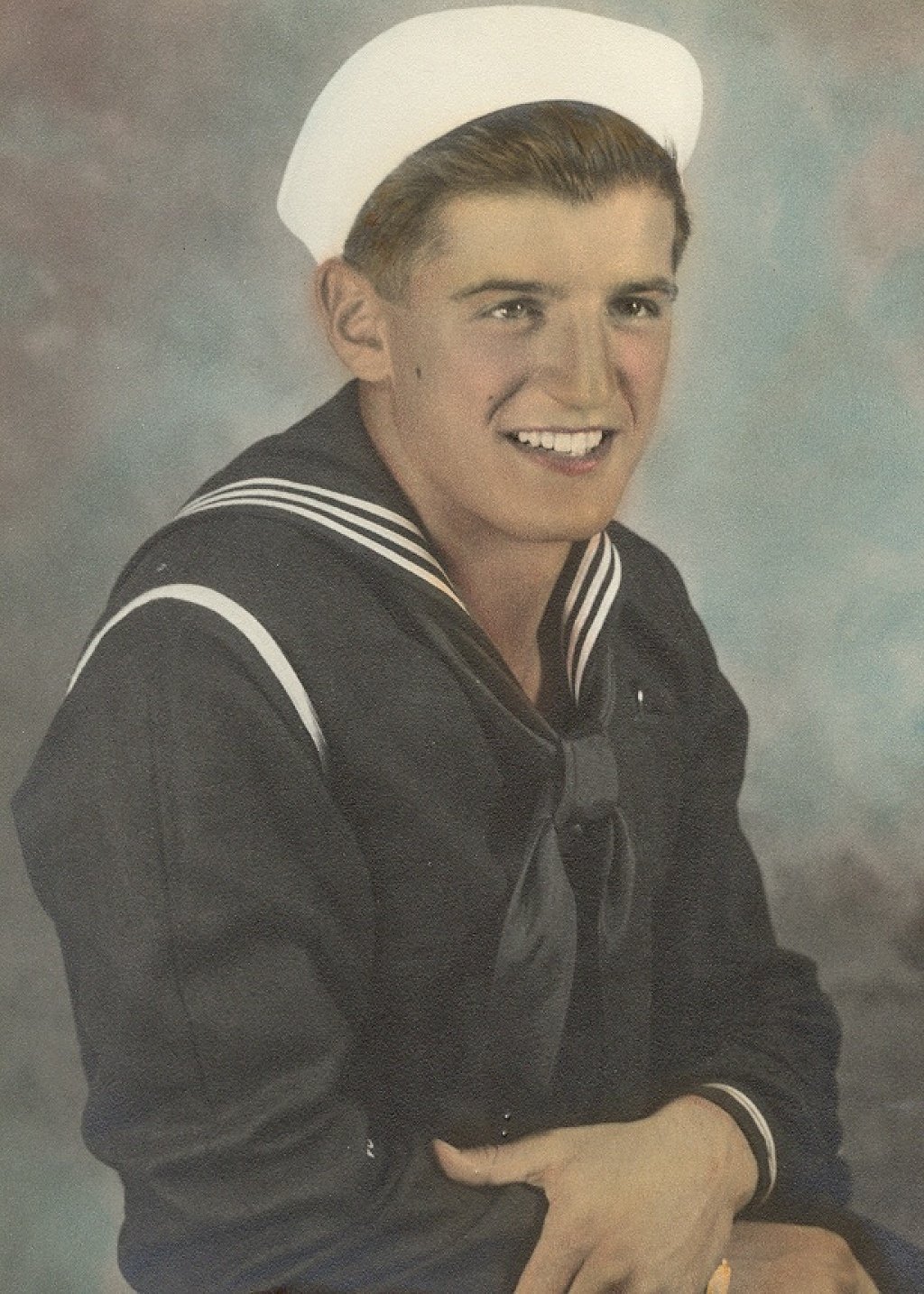
Joe DeMarco
Description goes here -

Stephen Cosgrove
Description goes here -

Marjorie Try WW2 Veteran
Veteran description coming soon
-

Howard Davis
Description goes here -

Percy Smith
Description goes here -

Fraser McKee WW2 Veteran
Description goes here -
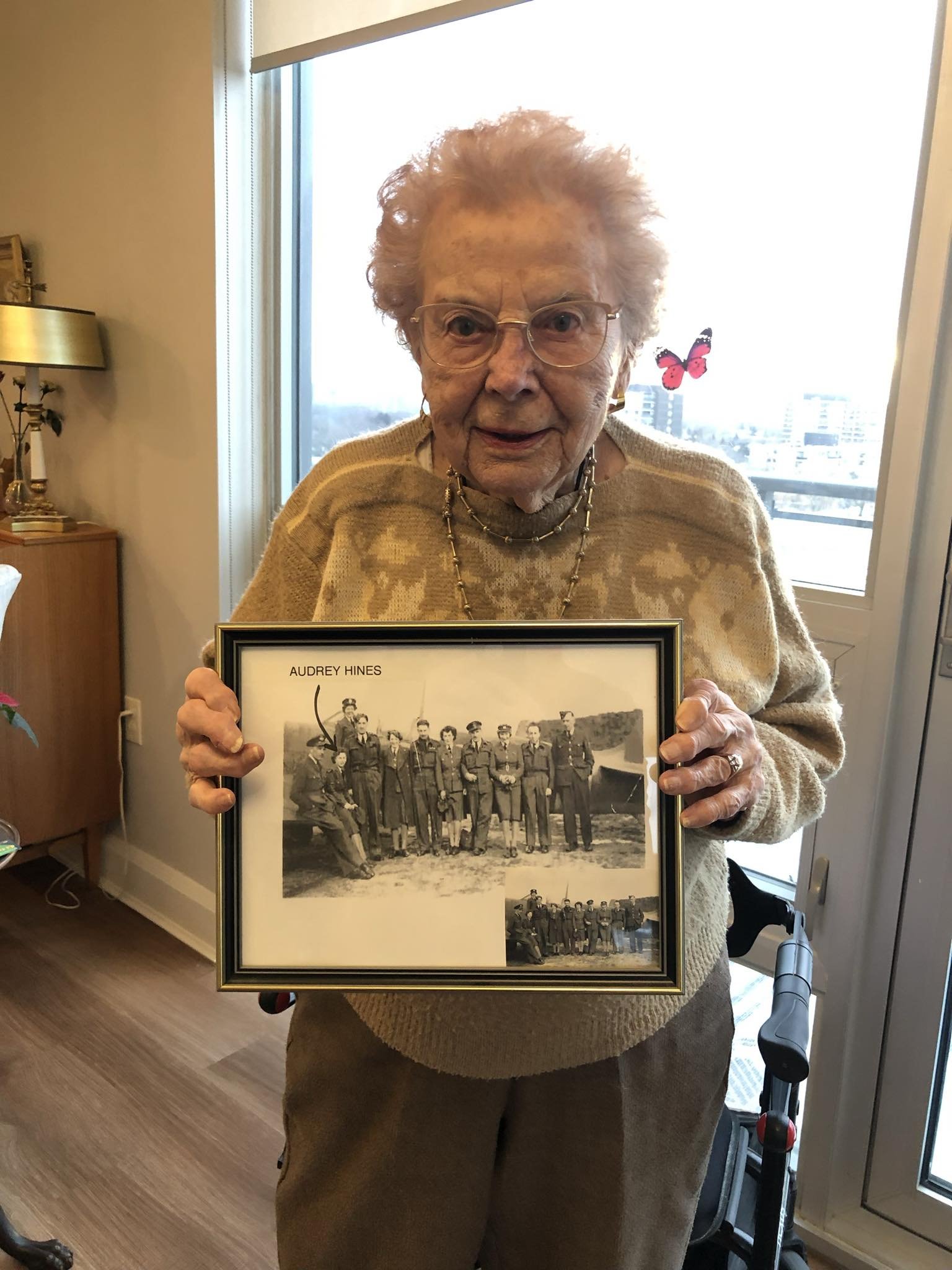
Audrey Hines WW2 Veteran
Description goes here -

Jack Boeki WW2 Veteran
Veteran description coming soon
-

Don Smoke
Veteran description coming soon
-
Jozef Palimaka
Veteran descripton coming soon
-
Ken Lett
Description goes here -
Bill Balabanow
Description goes here -
Jack Reid
Description goes here -
William "Bill" Parfitt
Description goes here -
Shelia Parfit
Description goes here -
Joe Reid
Description goes here -
Bill Wilson
Description goes here -
Augusta Bancbach
Description goes here -
Mary Owen
Description goes here -
Aubrey Ingraham
Description goes here -
Burdett Sisler
Description goes here -
Doug Stinson
Description goes here -
William Seifried
Description goes hWilliam Seifried was born May 3, 1925 in Ariss, Ontario, a rural community. His early years were spent on a farm with his many siblings, and the family moved to nearby Guelph when William was 14. He and a brother worked at Leland Electric, and when his brother went into the RCAF William Seifried joined up too, training at Petawawa and going overseas to England in 1944. In England William Seifried was assigned to the Regina Rifles, one of the regiments who had taken part in the first wave landings at Juno Beach and which had fought their way through the brutal Battle of Normandy. William Seifried was assigned to them as a replacement soldier, and after a brief time in England he crossed the Channel and landed at Calais part of Operation Undergo. He had been trained as a driver and expected to serve with an artillery unit, but as Canada’s losses were heavy he was now an infantryman. Later he would be reassigned to a scouting unit, doing reconnaissance on German fortifications. William Seifried was at the forefront of the Canadian units involved in the coastal push and liberating the Channel ports; as such he was in the thick of the Battle of the Scheldt and the liberation of the Netherlands. Along the way William Seifried got to know Major Orr, who asked William Seifried to be his batman; when the major volunteered for the fight in the Pacific so did William Seifried, and because of that the two of them were able to return to Canada in advance of many of the other troops. During that summer of 1945 William Seifried learned that the war in the Pacific had come to an end – and so had his service. He had married his sweetheart on his return to Canada, and the two of them went on to build a life and a family together in Guelph, finding their way in Canada’s postwar rhythms. William Seifried was interviewed by Scott Masters and Zach Dunn at his home in Guelph, Ontario in October 2024. https://www.crestwood.on.ca/ohp/seifr...ere
-
George Ferguson
Description goes here -

Edwin Cottrell
Description goes here -
Myrl Jean Hughes
Video below
-
Molly Torrens
Description goes here -
Stan Deveau
Description goes here -
Bob Miller
Description goes here -
Irving Locker
Description goes here -
Hal Urban
Description goes here -
Hilbert Margol
Description goes here -
Jack Moran
Description goes here -
Russell Freeburg
Description goes here -
Tom Vance
Description goes here -
Jack C Thomas
Description goes here -
Cecil Bailey
Description goes here -
Allan MacIassac
Description goes here -
Gordon Schottlander
Gordon Schottlander, a Jewish British WW2 Veteran and D-Day Hero. Gordon was born January 10th 1925 in London England, who served from 1943-1945 in Northern Africa and landed on Juno Beach on D-Day.
Gordon is an only child and has very fond memories of his childhood growing up in England. His father served in WWI and even won a medal for bravery. Unfortunately Gordon’s father never spoke about his time in the service with him or anybody, so little was known about his service.
Gordon shares that he was a huge football (soccer) fan and his team was Arsenal, Gordon also enjoyed playing cricket. Being left handed he played this to his advantage.
As the late 1930’s came and went, a young Gordon was well aware of the tensions of arising as was his father. In 1938, his father, knowing a war was soon going to begin in Europe, London would be targeted so Gordon and his family moved from London to Berkshire.
Shortly after, Germany invaded Poland on September 1st 1939, 4 years later, a 17 year old Gordon decided to join the service and serve his country, choosing to join the British Army in 1943. He completed his training in Reading England, being attached to The Berkshire Regiment, which he was then assigned to the signal division. Then Gordon was sent to the Isle of Man for training in signaling, such as morse code and various flag signals.
After that Gordon was transferred to Wales, training on landing craft and on beaches, climbing with various ropes, Gordon and his men weren't aware of any official plans of an invasion but quickly figured out what they were training for. After that Gordon went to Scotland where he completed some commando training. This was the winter of 1943, all of Gordon’s clothes were painted white and his weapons. At that time, Gordon and his men were told they were training for the invasion of Norway, which was occupied by the Germans at that time, but this invasion never took place.
From the snow to sunshine, Gordon was sent to Northern Africa. He was first stationed at the Marth Line, which was in southern Tunisia, for 9 months. Gordon was sent there as part of a signals core, where he was stationed in preparation for a possible counter attack by the Germans and Italians. As the British were preparing for another invasion of Northern Africa, such as the 1942 Battle of Second Battle of El Alamein but this never came. Gordon rode on bicycles and delivered messages from headquarters to battalions, down to platoons, and so on. Gordon mentioned the large bugs, sandstorms and hot weather were the biggest things that stood out about Africa compared to his home in England.
Now in the summer of 1944, two days before D-Day Gordon was shipped on a truck heading down to the south coast of England and was quickly moved right onto a landing craft.
At this time, Gordon was a very young officer, at just 18 years old, he was given orders from his commanding officers, Gordon was then promoted to a second lieutenant.
Gordon was on a ship for a few days before being shipped off and told he was participating in an invasion of France.
Gordon took off from Portsmouth on June 6th 1944, heading out early morning Gordon recalls like it was yesterday “it was raining, cold, windy and many of the men were sea sick, fortunately I wasn’t but many of the other men were. This one thing that stuck in my mind as we were getting closer to the beach was the noise”. “The planes were going over, but most of the noise came from the shells of the big battle ships coming from the channel”. On the landing craft the young officer tried his best to motivate his men “be calm, be quick, don’t pay attention to what was going on, just head straight for the beach”. As Gordon recalls getting closer to the beach “we started heading closer to shore the bullets started hitting the boat, we knew we had to get out, and when the front goes down, out you go”. Gordon was part of the first wave of men that landed on Juno Beach. Although being British born and being attached with a British regiment, Gordon landed on Juno Beach with the Canadians. Gordon was part of the 8th Beach Group which was part of the 5th Canadian Battalion, 3rd Canadian Infantry Division, The Berkshire Regiment.
As Gordon and his men jumped off the landing craft they landed in waist deep water. Gordon was carrying a Bren gun, a commando knife and a handgun and a backpack with 30 pounds worth of equipment and supplies.
As soon as Gordon hit the water he recalls “people going down right beside me, I could feel the bullets whistling by me (pointing to his head), I headed right for the beach”. Gordon explained how he was instructed he wasn’t allowed to stop and help anybody. “As my men went down I could stop and help them, because then, I became a stationary target”.
Once on the beach, he rushed onto the sand and climbed up one hill and then he quickly moved under cover. Under heavy fire Gordon and his men sat in cover for a few hours before the rest of the waves came in and American planes destroyed the majority of the German machine guns from above.
While on the beach Gordon saw horrifying things, many dead and injured men.
After moving up the beach Gordon’s next objective was to move through Normandy to the city of Caen. He was met with great joy and warmth by the French people, giving them what little food and drinks they had. “They were so happy to see us, they treated us like liberators, because I guess we were, they were under German rule for so long and really suffered”.
There were challenges moving through Normandy, as Gordon tells “one of the biggest mistakes the British made was, they underestimated the French foliage, there were large bushes everywhere, making it hard to see targets”. Gordon tells of his experience moving up to a house and needing to see the target. Typically soldiers would quickly look over the bushes or hedges to see what their target was.
Once at a particular hedge, Gordon stood up to look at the target and within a flash a German mortar bomb landed right in front of him, exploding instantly. He was immediately knocked out.
Gordon was awakened a few minutes later, he received shrapnel in his shins, and legs and said to himself “why is there water in my boots? I soon realized it wasn’t water, but it was blood, then I saw the medics rush to me”. Gordon remembers being hit with morphine and “there were no antibiotics in those days, they used sulfur ”. “They stitched me up and sent me back to England”. From Gordon’s memory he received around 40-50 stitches.
Gordon was shipped back to England, in a hospital near Reading, to recover from his injuries
Gordon’s positive and happy attitude got him in a little trouble in the hospital, as he said “one of the nurses made me laugh so hard I burst my stitches, the Doctor wasn’t too pleased with me”.
After England, Gordon was sent to Bangor,, Northern Ireland, for the final stages of his recovery, After recovering, Gordon was then sent to Holywood, County Down Belfast, to the Royal Allter Regiment,
While in Ireland, as an officer, Gordon’s task was to escort the daughters of senior officers, who came to visit the battalion headquarters, as Gordon tells “two of the daughters got out of the car, one blonde and one brunette” and he joked “I'll escort the brunette, and after that we were married and together for 65 years”. Gordon's advice for a long marriage was “don’t make waves, understand each other, and don’t make small things into big things”.
As the war ended in 1945, Gordon was stationed in Ireland at company headquarters working in the office. Overseeing the programs and training of the troops.
When May 8th 1945 came around, better known as VE Day, Gordon celebrated downtown Belfast.
Gordon’s service extended from 1947-1950, where he was stationed in West Africa before leaving the military entirely, finding work in England. Gordon told his journey next was by chance, he was going to an interview in London and after getting off a bus, it was pouring rain, he went quickly into some cover and looked up at the window to see photos of Niagara falls and Toronto skyline. Gordon went into the shop that read Canada House, picked up some pamphlets, went home to his wife and said “lets move to Canada”.
Gordon has lived in Canada ever since 1950, had 4 boys and on January 10th 2025 turned 100 Years Old. We thank Gordon so much for his time and service. He is one of a few remaining D-Day Veterans. Please follow Global Veteran Stories on YouTube and Facebook for Gordon’s full video interview being posted shortly.
-
Bob Hoover
Description goes here -
John Neu
Description goes here -
George Rubin
Description goes here -
Nick Borisko
Description goes here
Korean War Veterans
-
James "Jim" Thistle
-

John "Wally" Cavan
-

Andy Barber
-
Glenn McCormack
Description goes here -
Charles "Doug" Raynbird
Description goes here -
Kim Woo Young
Description goes here -

Alfred Theodore “Ted” Du’Bois
Alfred Theodore “Ted” Du’Bois was born in February 1932 in Chetek, Wisconsin.
Ted was the youngest of 14 children, growing up on a farm in Wisconsin. He shares many stories from his childhood, including playing sports and working on the farm.
Ted was only 7 years old when WWII started and 15 when it ended. Many of his siblings served in the military during the war. He recounts stories of his older brothers, Leroy and Johnny, who took part in overseas action in Europe.
As WWII came to a close in 1945, a new global conflict was brewing in a small Asian country off the coast of Japan. In 1948, the United States left South Korea, and in 1949, the Soviet Union left North Korea. Tensions were rising between the two very different political systems in Korea, and on June 25, 1950, North Korea invaded South Korea, marking the start of the Korean War.
A United Nations task force of over 14 nations joined to help the struggling South Koreans fight against the North Koreans and the eventual large Chinese force.
Ted’s military career began at the age of 19 when he joined the Air Force. He completed his basic training at Sheppard Air Force Base in Wichita, Texas, with Squadron 3743, just after his 20th birthday in February 1952.
Ted was trained as a tail gunner on America’s large B-29 Superfortress bombers. The Boeing B-29 Superfortress is an American four-engine propeller-driven heavy bomber, designed by Boeing and flown primarily by the United States during World War II and the Korean War. Named in allusion to its predecessor, the B-17 Flying Fortress, the Superfortress was designed for high-altitude strategic bombing, but also excelled in low-altitude night incendiary bombing, and in dropping naval mines to blockade Japan.
He was stationed in Japan during the war and participated in night time bombing raids over North Korea.
Ted recalls several close calls with enemy fighters shooting at him and his crew multiple times.
During the war, he met and married a Japanese woman. They were married for 67 years until her passing six years ago in 2018.
Zach Dunn completed his interview with Alfred Theodore Du’Bois on August 14, 2024, with the help and support of Ted’s great-granddaughter and daughter. Ted’s interview is a part of Zach’s Veteran Documentary Project called “Global Veteran Stories” where he interviews WW2 and Korean War Veteran around the world, saves their stories via video and posts them on YouTube. So the next generation can watch and learn about the history and thank our Veterans for their service.
Zach Dunn truly thanks Ted’s family for the opportunity to meet Ted and preserve his stories. -
Romeo Daley
Description goes here -
Kit Booth
Description goes here -
Larry Rafferty
Description goes here -
Leon Moyen
Leon Meyon was born November 9th 1930 in Luxemburg, is only 1 of 2 remaining Luxembourgish Korean War Veterans alive in the world today. Growing up in Luxembourg, a very small country, that got caught in the turmoil of World War II. His childhood was hard, growing up on a small farm with various animals. His father served in the French Army during the early years of WW2 but tragically died in France during the German invasion of 1940, news that Leon and his family didn’t receive until 1945. During the war, Luxembourg was under strict Nazi control, and daily life was dictated by the occupying forces. The Germans controlled food supplies, movement, and basic freedoms, making survival difficult.
Leon remembers the battle of the bulge quite well. Him and his family heard shooting and bombing around their town. One night, his mother and family wanted to hide in the basement in their house to take cover, but Leon said they should retreat to the city to find safer cover there. Although his family disagreed they all went into the city. Returning the next day to their home was completely destroyed and in rubble.
Leon recalls the Americans liberating his town in 1944 and at the end of the war, Leon was 15 in 1945.
Leon's early service: 1947-1950.
At the age of 17, in 1947, Leon joined the Luxembourg army and by 1950, the start of the Korean War, Leon was 1 of 110 Luxembourgish soldiers who were selected to fight in Korea. Leon was attached to a Belgium battalion and was sent there for initial training.
After training, Leon boarded a ship for Korea, the journey took 6 weeks and he landed in Pusan in 1951. Upon landing his first impressions of Korea were truly a stark contrast to his homeland—poverty-stricken civilians, war-torn cities, and a harsh climate. The people of Korea were struggling, and Leon recalled seeing many starving children, a sight that reminded him of his own difficult childhood under German occupation. But when asked about if he could relate to the South Korean and what he went through during WW2, Leon said very quickly “absolutely not, those poor Korean children had it so much worse than me in Luxemburg” mentioning that “at least the Germans fed us once a day, these South Koreans had less than nothing”.
First Deployment and Night Patrols (1951)
Leon was initially stationed in Pusan before moving to Taegu for three weeks. From there, he was transported in American military trucks to the front lines near Seoul, working closely with U.S. forces. He quickly became part of night patrol units, a critical role in mountain operations.
His first assignments were in the region of the Han River, where he and his unit conducted reconnaissance and security patrols every night. These missions involved navigating rough terrain, searching for enemy movements, and engaging in occasional firefights. While not every patrol was dangerous, some were life-threatening, with North Korean soldiers setting up ambushes. On these missions Leon was instructed to carry light, so he always had 4 grenades, a side arm and a submachine gun on him at all times.
During one particularly horrifying mission, Leon and his men discovered the bodies of 200 American soldiers who had been executed by North Korean forces. Saying very vividly “I saw 200 of our boys with their arms tied behind their back and each with a bullet in the back of their necks. The North Koreans rarely took prisoners, they were savages, you learned to hate them pretty quickly”.
As the war progressed, Chinese forces entered the conflict, forcing Leon’s unit into a brutal retreat. The Chinese tactics were unlike anything he had seen before—they used deception, hiding in trees, moving silently through the forests, and attacking in waves. These relentless assaults forced Leon’s unit to fall back to Seoul, where they had to dig in and defend the city from advancing enemy forces.
Injury, Capture, and Life as a POW (1951)
During one of his missions near the Han River, Leon was seriously injured. He and his men were on a mission and suddenly a barrage of shooting came upon them, all of a sudden Leon felt a shooting pain in his leg. He intensely dropped and soon discovered several bones sticking out of his left leg, he passed out from the pain and was woken up by Chinese soldiers. He was taken on a stretcher and placed in a POW camp. Leon says he was there for around 11-12 days, but his memory is quite hazy. He remembers never receiving medical attention, food or water during this time. He says that he was sleeping on the ground, no tents or anything in this camp.
He remembers marching towards China, a grueling journey that many did not serve.
After settingling down one night he was escorted by a Chinese guard to use the bathroom, which was a hole in the ground close to the camp. Leon tells this story as it happened yesterday “after I pulled up my pants from doing my business, the soldier pointed to an open fence gate (signaling him that he could escape the camp from there), as I crawled away I look back at him and he sollotted me as I crawled to safety. I have such respect for the Chinese soldiers, they were real soldiers, and he saved my life”.
Leon was able to crawl across a river and into the American line, where he was shot at, he quickly realised he had to show his face to the soldiers or continue to be shot at. After struggling to stand up one man shouted “oh shit, it’s one of our own”. He was transferred to a hospital in Japan, where he spent four months recovering before being sent back to Luxembourg.
Furious by this decision by the army, Leon was only home for 1 month before being requested to be sent back to Korea, Leon says “I wanted to go back and fight with my men, it was the right thing to do”. He re-enlisted and flew back to Korea for a second tour in 1952.
Second Tour and Fighting at the Imjin River (1952-1953)
Leon landed in Tokyo, Japan, and took a train to Sasebo before shipping out again to Korea. He was stationed at the Imjin River, where some of the fiercest battles of the war took place. His unit was repeatedly forced to retreat under heavy enemy pressure. The terrain was difficult, and the fighting was relentless.
By this time, he had become accustomed to trench warfare, living in foxholes, and manning machine guns. He carried submachine guns and hand grenades, essential for close-quarters combat. The brutal nature of these battles took a toll on him and his fellow soldiers, but they continued to push forward.
Becoming a Double Crosser (1952)
After months of patrolling, Leon was given a new assignment: to become a Double Crosser. This role required him to cross enemy lines and carry out commando-style missions, often lasting up to five days at a time. These missions were dangerous and involved living off the land, evading detection, and gathering intelligence. Sometimes, his unit would have to engage in direct combat behind enemy lines.
Leon’s most memorable experience
Living in the trenches, Leon recalls one specific story, after coming off a patrol, an fellow Belgium soldier named, Robert Morris woke him up and gave him a coffee, after telling him it was too hot and asking him if there was any water left, Robert put down his coffee and walked about 10 feet away from Leon’s foxhole to get the water, within seconds a huge motor dropped right on top of Robert, “blowing him to pieces intensely, he felt no pain, but there were little pieces of Robert everywhere, I couldn’t believe it and I'll remember it for as long as I live”. “I was devastated, but then quickly became frustrated as the surrounding soldiers, wanting to clean up the mess, bought out a trap, picked up what was left of Robert and started dragging him away. I never yelled at anybody in my life but I was so mad. I don’t even remember what I said, but I was so angry that they had to grab him away like that, like he was nothing. After I calmed down and realised, why else could they do it? I apologized to the men later, but that moment I’ll never forget”.
End of the War and Return to Civilian Life (1953-1955)
In 1953, a ceasefire was declared, marking the official end of hostilities. Leon remained in Korea for a short period before finally returning home. However, his experiences had left deep scars, both physically and mentally.
He decided to leave military life behind and focus on building a new future. In 1955, Leon emigrated to Canada, seeking a fresh start. He eventually married in 1957 and began a family. Despite leaving the war behind, the memories of Korea never faded. He carried the lessons of his service with him, becoming an advocate for remembering the sacrifices of those who fought.
Legacy and Remembrance
Leon Moyen shared his incredible story with Zach Dunn on March 22 2025 at the age of 94. Leon was quite the big personality and is very quick to humor. Despite all he saw during his life, he remains a funny and kind man.
We thank Leon Moyen for his service. Being 1 of the last 2 remaining Luxemburg Korean War Veterans left in the world, his story is truly a treasure to hear and listen to. Thank you to Scott Masters from CrestwoodOralHistoryProject.com for this incredible introduction.
Vietnam Veterans
-

Robert White
-
Don Peers
Description goes here -
Jim Devlin
Description goes here

